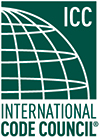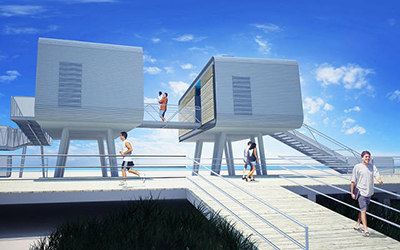 |
ICC Viewpoints |
| Take the conversation further with commentary and discussion on important code issues |
| Some links may take you outside of the Code Council's website. ICC is not responsible for the content and privacy practices of outside websites. |
 Is "Building Resiliency" Becoming a Movement? Is "Building Resiliency" Becoming a Movement?Mother Nature is teaming up with a collection of green building advocates and industry groups to propel a movement that home builders generally support but that they also fear could give rise to onerous new codes as well as rules favoring certain construction products. The movement goes under the general label of "resiliency" and refers to a building's ability to withstand natural disasters like hurricanes, earthquakes, tornadoes, wildfires and flooding. It also can extend to events like severe winter storms. The threats are nationwide, but so are resiliency's benefits: One oft-quoted study by the Federal Emergency Management Agency suggests that for every dollar spent on disaster mitigation, society saves four. In some ways, promoting resiliency is nothing new; building codes have been updated for many years largely to help homes resist bad weather. But what is new is the increase in government and group efforts over the past year to work more diligently on the idea of resilience and promote its benefits. Read more at ProSales Magazine |
| Back to top |
| Conventional Roof Framing: A Code's-Eye View Long before any building codes were published, conventional roof framing methods developed through practice, resulting in approaches to roof framing that are as varied as the framers themselves. In the past, methods described by the three main building codes (BOCA, UBC and SBC), though similar, differed based on climatic factors (such as expected wind and snow loads) local habits, and available materials. Between the Eastern and Western codes, there were even different names for identical parts. Combining these disparate styles and standards into a single code (the International Residential Code) was no easy feat, and seemingly fundamental aspects of roof construction are still up for debate. |
| Back to top |
| Wasting Energy Is Not an Option Building standards and codes should be evaluated to not only protect the public. Best practices to save energy and reinvest those savings are slow to happen here. Special interests and politics still reign supreme in the United States. Germany comes in first in a new energy efficiency ranking of the world's major economies, followed by Italy, the European Union as a whole, China, and France, according to the 2014 International Energy Efficiency Scorecard published today by the nonprofit American Council for an Energy-Efficient Economy. New to the rankings this year are four nations: India, Mexico, South Korea, and Spain. |
| Back to top |
| Fundamentals of Resilient Design: Dramatically Better Building Envelopes When most people think about resilience—resilience during a storm, for example—they think only about resilience during the event. How effectively will the building withstand strong winds or flooding? Equally important, if not more important, is resilience in the aftermath of that event. Hurricanes, ice storms, blizzards, wildfires, tornadoes, and other natural disasters not only have an immediate impact, for which we may or may not be able to prepare, but they often have a much longer-term impact, especially through extended power outages, and those impacts may extend much further. In achieving resilience, one of our most important priorities is to ensure that our dwellings will maintain livable conditions in the event of extended power outages or interruptions in heating fuel. (I used to refer to this as "passive survivability," but I came to realize that this term was too negative or dire-sounding to get much buy-in.) The most important strategy for ensuring that those livable conditions will be maintained is by creating highly insulated building envelopes. I will cover other strategies, such as passive solar heat and solar electricity, in future blogs in this series. Here are the key strategies for achieving exceptionally good energy performance. |
| Back to top |